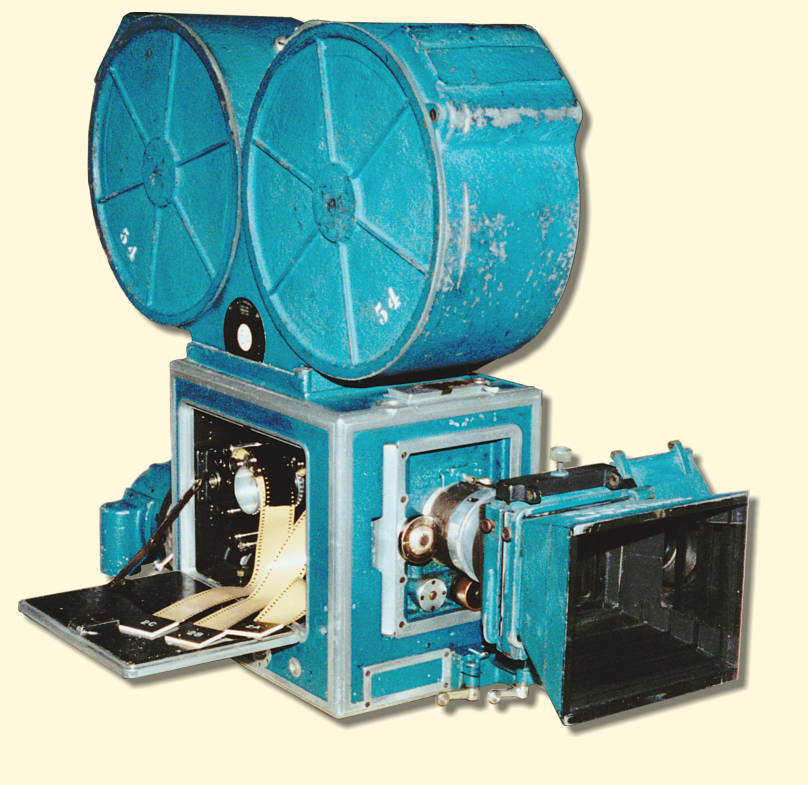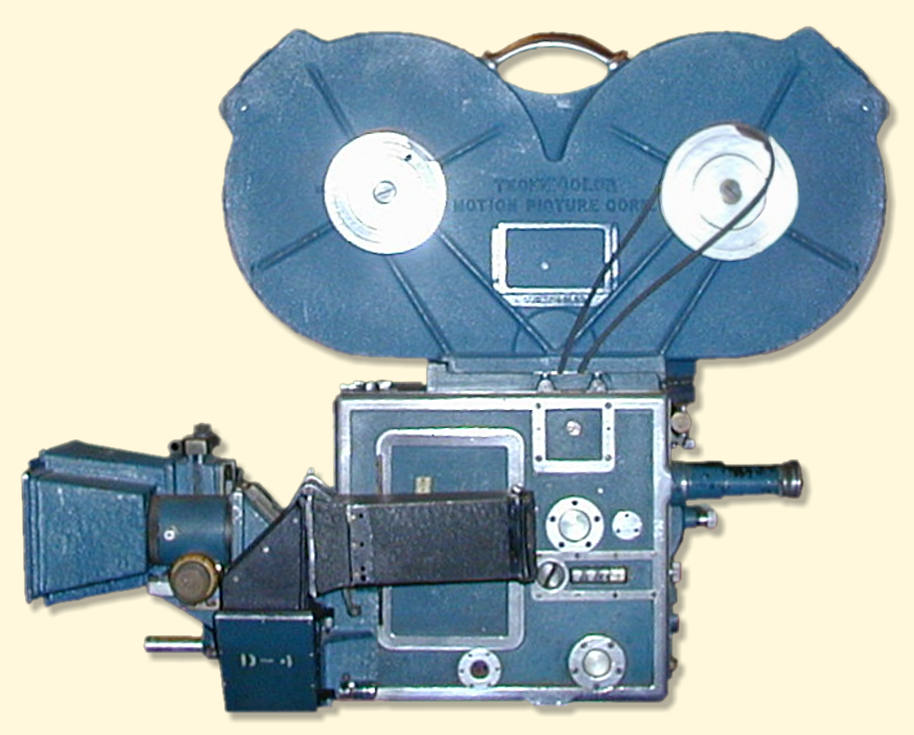
Photo copyright ©2001 The American WideScreen Museum
The three-strip camera had openings on both sides of the body in order to facilitate threading of the three component films, which was a bitch to say the least. Technicians from Technicolor were part of the package when the studios rented the cameras. With doors on both sides of the body, it was necessary to place the motor in the rear rather than the usual location on the right side (as seen from the rear).

Photo copyright ©2001 The American WideScreen Museum
For some reason there were variations in the paint color of the Technicolor cameras. This photo shows the most common paint scheme. A number of the cameras were like the photo at the top of the previous page. How's that for absolutely useless trivia?

Photo courtesy of Steve Kraus
This photo of the left side of the camera shows it "racked over" for direct viewing through the taking lens. There was virtually no such thing as a reflex camera during the three-strip era. The exception was the German Arriflex, but it saw only a smattering of use in the U.S. until the 1950s. There was a war or something like that. Camera operators and their assistants carefully planned each shot by previewing it through the taking lens. In the case of Technicolor cameras, all taking lenses were custom made by Taylor-Hobson in England. Due to the prism arrangement behind the lens that directed the photographed image to each of the three films, the back focus was much longer than a conventional camera. The three strip camera was a carefully engineered and manufactured machine, but there were certain aspects that differed from camera to camera. For instance, the registration of the three negative films differed slightly from camera to camera. The lab knew the characteristics of each camera and compensating adjustments were made in the production of the optically printed matrices. Many newer video transfers made from the three original camera negatives do not compensate for the registration differences and the viewer will see this readily as the registration will bounce around from cut to cut. While print registration was not perfected until the mid 1950s, after the demise of the three-strip camera, film audiences did not see the jolting changes in registration that we may see in those same films when reproduced today.
